Top Tier CPU Air Coolers Q3 2015: 9-Way Roundup Review
by E. Fylladitakis on July 6, 2015 8:00 AM ESTThe Cryorig R1 Ultimate
Cryorig is a company that popped literally out of nowhere in 2013. They claim to be a company founded by experts with previous experience at other well-known companies, who banded together to both make a name for themselves and to offer "the best of all worlds". The R1 Ultimate that we have here today is the largest, most powerful cooler that they currently manufacture.
We received the R1 Ultimate well packed in a large cubic cardboard box. Everything inside the box is well packed and the bundle is well presented. Cryorig supplies the necessary hardware for the installation of the cooler, a tube of quality thermal grease and a long shank L screwdriver tool. The screwdriver tool is necessary for the installation of the cooler, unless if there is a >170 mm shank Philips PH2 screwdriver available. They also provide a third set of wire clips, for the installation of a third cooling fan.
The Cryorig R1 Ultimate is a very large dual tower cooler. Plastic frames partially cover each tower and are used as supports for the two 140 mm cooling fans. The fans are preinstalled and removing them is not necessary for the installation of the cooler. Each of the two towers has two series of fins. The silver front half of each tower consists of 42 fins, the black rear half of 53 fins. The company claims that by reducing the spacing halfway across each tower, they can accelerate the air exhaust, forcing the hot air to exit the tower faster. It is a rather peculiar approach, as a uniform gap across the entire tower could achieve the same air backpressure/speed without the extra turbulence and noise that the transition will cause. Perhaps Cryorig's research showed that this approach somehow improves thermal performance, by either thinning the boundary layer or simply through higher turbulence flow.
No strange shapes or patterns here - the front of the towers is entirely straight, with Cryorig apparently thinking that trying to improve anything by shaping the intake side of the fins is a waste of resources. The rear of the fins forms a simple geometric pattern, not just to improve the aesthetics of the cooler but also to provide insertion points for the provided screwdriver, which needs to be inserted in the gaps between the center fan and the fins for the installation of the cooler.
Cryorig is using two 140 mm fans, rebranded to their own company logo. They appear to be the same as the XF140 fans that the company retails as well. Aside from the "high precision low noise" bearing that the specifications vaguely describe, not much can be found about the fans, other than that they have a maximum speed of 1300 RPM. According to the specifications of the R1 Ultimate, they are also rated at 23 dB(A). This however is a little misleading, as this is the rating of a single fan in standard test conditions (unrestricted) within an anechoic chamber, not of two fans installed on the cooler itself.
The copper base and heatpipes of the R1 Ultimate have been nickel plated to prevent oxidization, a common upgrade for high-end products. The contact surface is very smooth but not polished down to a perfect mirror finish. In order to save a little room and install a seventh heatpipe, Cryorig placed the seven heatpipes in a slight convex formation.


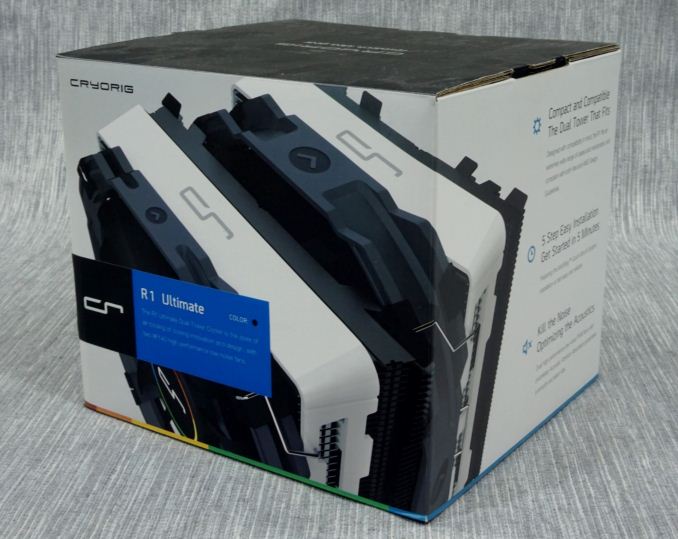
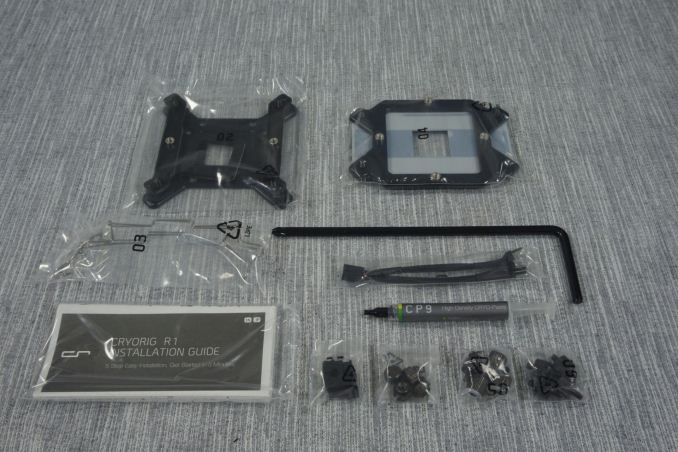
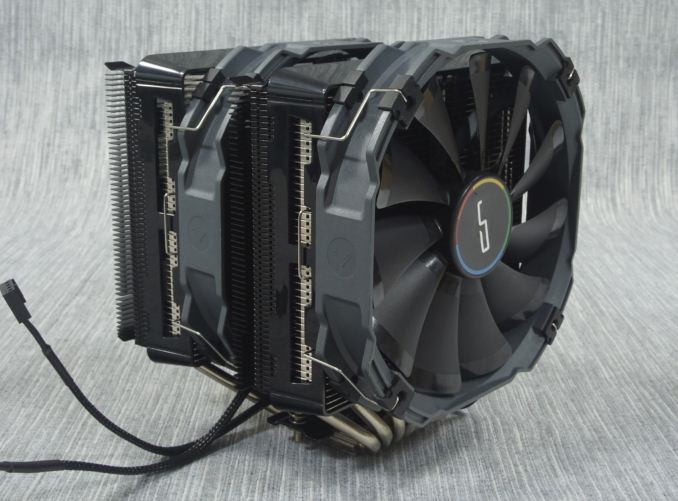
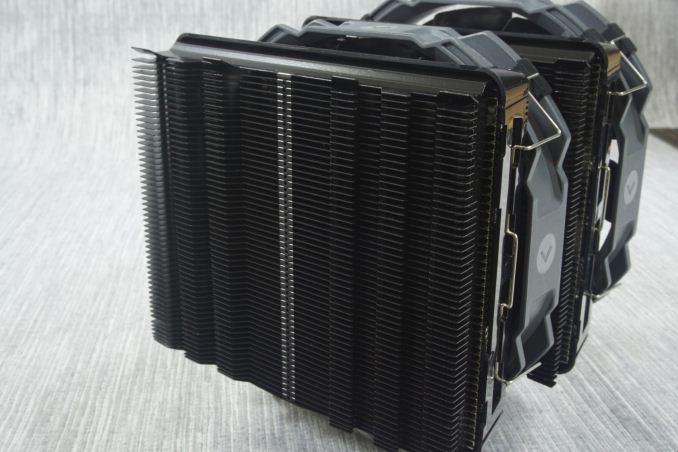
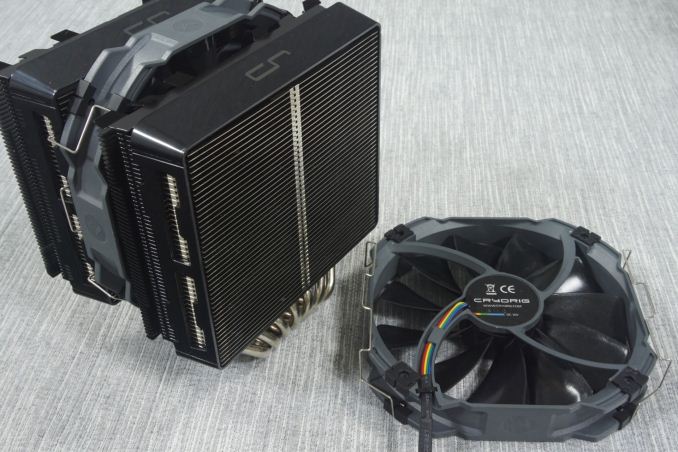
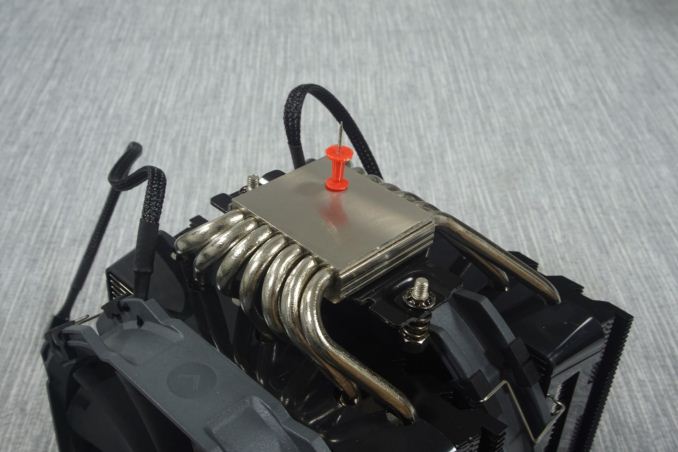








135 Comments
View All Comments
Drumsticks - Monday, July 6, 2015 - link
They did one of these round ups with the 212 Evo or + a while back, also involving high ends from Noctua (U14 and U12S I believe). They found that it doesn't quite match up, but I know it got a mention for exceptional performance for cheap. I think it falls behind more in noise than performance.It definitely would have been interesting to see it in here, but nevertheless, thanks for the review!
kmmatney - Monday, July 6, 2015 - link
I usually undervolt the fan a little - takes care iof any noise issues.Arnulf - Monday, July 6, 2015 - link
+1Nagorak - Monday, July 6, 2015 - link
I would have also liked to have a "decent" CPU cooler like that included, as well as the stock Intel/AMD HSF. It's great seeing how these coolers stack up to one another, but it doesn't truly quantify how much of an improvement you're getting over a cheap alternative, or the stock fan. For the record, I haven't run with a stock fan on any main PC I've owned in the past 15 years, but I would be curious to see how much I'm actually gaining.Araemo - Monday, July 6, 2015 - link
Especially given the raw value of the Hyper 212 Evo at $30, it may get within a degree or two of some of these for half the price or less... which is why my last build had the Hyper 212+ (It's been a few years) - I could have gained maybe 5C by spending 4 times as much.. which didn't seem worth it to me.TheJian - Tuesday, July 7, 2015 - link
AGREED. I have one, and at $29.95 from newegg just a few months ago on sale it was an AWESOME deal. i4790k can do massive oc's with it and even at full load is not terribly annoying with my 5850 causing most noise when gaming. This is still a top seller and for good reason.LittleLeo - Thursday, July 9, 2015 - link
Since its about the most popular cooler for gamers that would have been nice.jay401 - Monday, July 6, 2015 - link
I'm actually really glad to see this article, it's been ages since I've seen a good CPU air cooler roundup and sockets have changed several times over the years so it's nice to know what works well these days.jmke - Monday, July 6, 2015 - link
air cooling has plenty much run into a wall; heatpipes to copper base, aluminum fins on the heatpipes, put 140mm or 120mm fan... there is not a lot of wiggle room, so performance of those that follow this recipe is very close.differentiators now for most part are: socket compatibility, price, installation method. Raw performance/noise is no longer the focus imho if you want a successful product
meacupla - Monday, July 6, 2015 - link
It's not so much socket compatibility, so much as how compatible you can make your heatsink against mobos that have poor design choices.Although not as common on mATX and larger boards, mITX suffers a lot from this, because manufacturers attach fragile bits onto the back of the mobo, near the CPU socket, that interfere with the mounting bracket. Either that, or the CPU socket is placed too close to the PCIe, etc.
That Reeven Okeanos is something I haven't seen since Athlon 64 days, which are heatsinks paired with a stupidly loud fan. Look, if I wanted a heatsink with stupidly loud fan, I would buy an amazing heatsink or watercooler first, then attach the stupidly loud fan to that, instead of some mediocre heatsink with a mediocre fan.